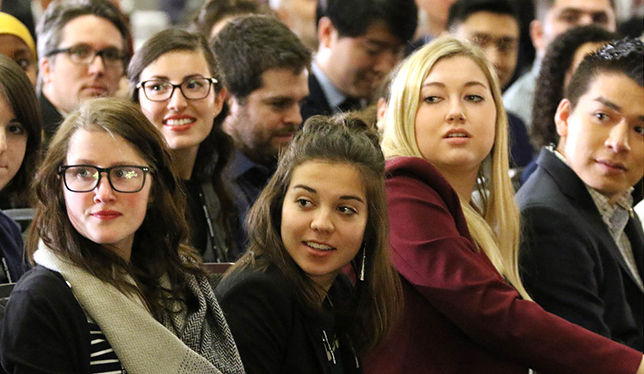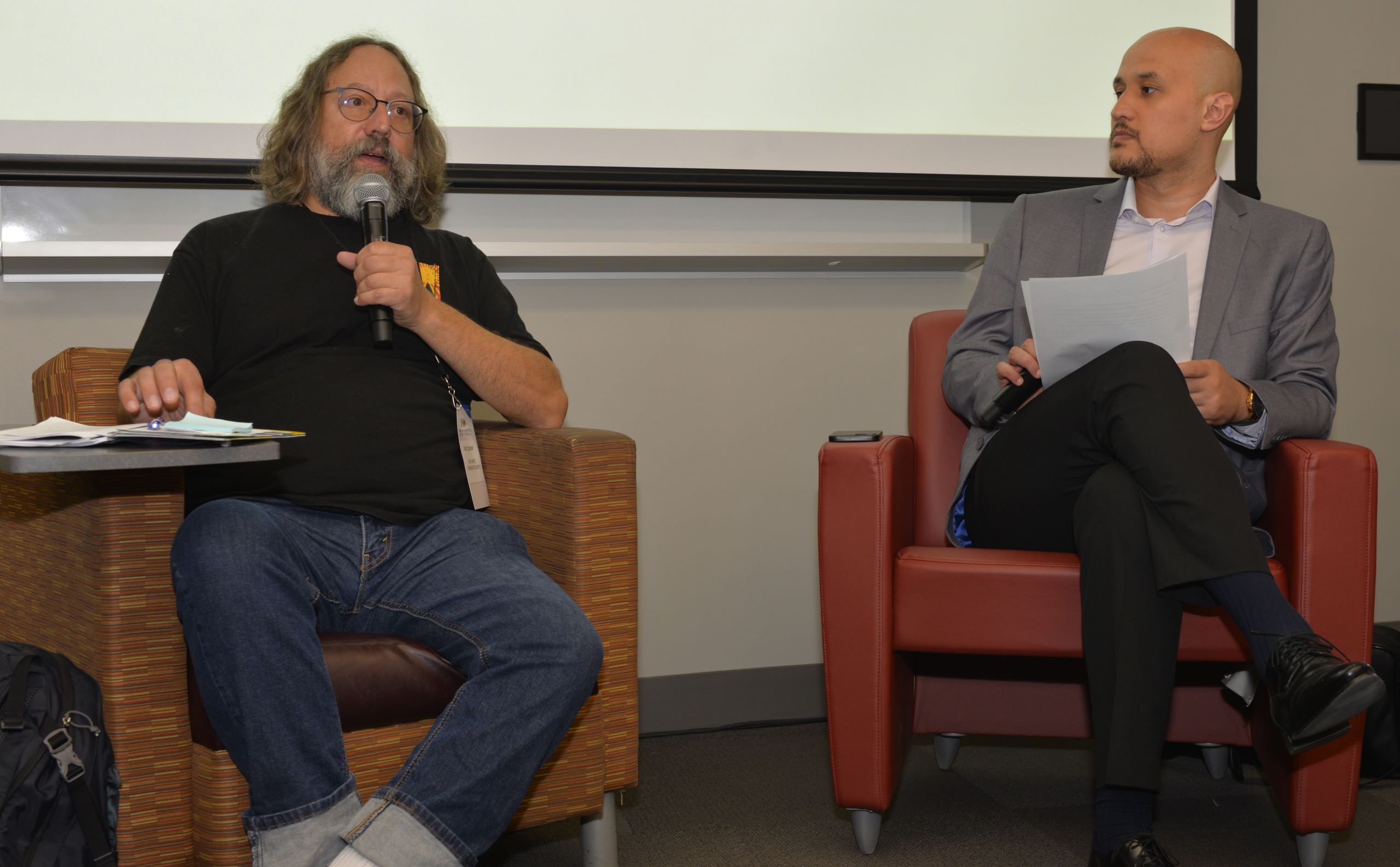Most universities report having equity, diversity and inclusion plans, but challenges remain
Universities Canada’s first-ever survey on EDI lets members compare results, share best practices.

More than three-quarters (77 percent) of Canada’s universities explicitly reference equity, diversity and inclusion in their strategic plans or long-term planning documents, and 70 percent of institutions either already have or are in the process of developing an EDI action plan, a new survey by Universities Canada has found. (Universities Canada is the publisher of University Affairs.) The association canvassed its member institutions on their EDI activities as part of the association’s Inclusive Excellence Principles, adopted by members in 2017. Universities Canada also committed to a five-year action plan to support members’ progress.
The survey, conducted earlier this year, was done to collect baseline data to better understand the current EDI landscape at universities, and to enable members to compare results and share best practices, according to a report on the survey’s findings, released November 4.
“Survey results indicate that universities are prioritizing EDI action plans, strategies and policies …[and] the recruitment and retention of diverse talent among senior leaders, faculty, staff and students,” reads the report. “However, this survey shows that the higher education community, like many sectors, must continue to do more to advance EDI and demonstrate progress over time.”
Among the common challenges impeding institutions from making headway, respondents cited a lack of resources as the most pressing. This includes a lack of funding, both for recruitment and retention, and to support EDI staff and initiatives. For example, of those institutions with EDI offices, a third (32 percent) have one or less full-time equivalent staff. Other challenges include difficulty attracting and retaining diverse talent, including in senior leadership; institutional systems, policies, structures and cultures that can hinder progress; and insufficient information on best practices for EDI.
Approximately 60 percent of senior university leaders identify as belonging to at least one of the designated equity-seeking groups (women, racialized peoples, people with disabilities, Indigenous peoples, LGBTQ2S+). While racialized people represent just eight percent of senior leaders, they represent 21 percent of full-time faculty, 31 percent of doctorate holders and 22 percent of the Canadian general population.
Meanwhile, the proportion of women in senior leadership positions in universities (49 percent) is nearly equal to that of men. However, there are fewer women in the executive head and vice-president positions at Canadian universities. Of the 96 member institutions of Universities Canada, 25 have a female executive head, or more than one-quarter.
The Universities Canada survey is not the only one collecting EDI data in the postsecondary education sector. In October, Statistics Canada launched the Survey of Postsecondary Faculty and Researchers to fill in informational gaps around the level of EDI at colleges and universities. The survey stems from a federal government commitment in Budget 2018 to collect better data on postsecondary faculty and researchers in support of greater diversity among those receiving funding from the country’s three research granting councils.
The StatsCan survey was sent out to 100,000 people, including full- and part-time faculty, postdoctoral fellows, doctoral students and college instructors. Those invited to complete the survey have until December 6 to do so. The results are expected to be released by StatsCan starting sometime next spring.
Featured Jobs
- Canadian Politics - Assistant ProfessorUniversity of Toronto
- Psychology - Assistant Professor (Clinical Psychology)Queen's University
- Canada Excellence Research Chair in Energy TransitionsUniversité du Québec à Trois-Rivières (UQTR)
- Education - Assistant Professor (Distance Education)University of Toronto
- Canada Excellence Research Chair in Forest Biodiversity Conservation (Full Professor)University of New Brunswick














Post a comment
University Affairs moderates all comments according to the following guidelines. If approved, comments generally appear within one business day. We may republish particularly insightful remarks in our print edition or elsewhere.
3 Comments
Canada is a progressive country and it is going to take time before staffing etc reflects our diversity. People hold jobs for 30 years (or at least used to), so it is natural that the demographic changes we’ve seen in the last 20 years are not wholly reflected by the staff. Things are changing and will change, there is no point in creating controversy where it does not exist.
Instead of focusing over and over again on diversity, which is more about visible diversity and quotas than anything else, we should be focusing on the shifting job paradigm and training qualified, critically-thinking people. Not just people who learn how to say “diversity is our greatest strength, down with colonialism, break the patriarchy”.
I fear for the future of many students who go directly into university after high school because “that’s what you do”. Many people are going to get a wake-up call and it is not going to be beneficial to our country – we need productive, taxpaying people to fund our progressive social welfare. Instead, UA ignores the stark reality of the job market and simply posts more of the same social commentaries, simply because they are in vogue now.
I agree wholeheartedly with poster D. Li but would like to take it one step further and suggest that the common tendency among university leadership to rely heavily, if not primarily, on long-term assignments (LTA) to fill faculty positions is the greatest threat to the quality of education students are receiving. In Ontario, there are situations where even the government (i.e., the funder) is recommending creation of more tenure-track/tenured, permanent positions but universities are declining to do so, preferring to rely on contract positions.
We are so focused on making university to anyone and everyone who seeks to pursue a university education but then are relying on suboptimal teaching conditions to educate them. How are faculty who don’t know from one semester to the next or one school year to the next whether or not a position is going to exist for them at their place of employment supposed to plan their courses, let alone accommodation strategies? We have LTA faculty who will work from contract to contract, collecting unemployment over the summer or working summer contract jobs (if they’re lucky). These positions are often not eligible for the same training and orientation programs as new permanent faculty members. Since they also rarely know what courses they will be teaching from semester to semester or year to year, they must fly from the seat of their pants in terms of preparing course material. They also do not qualify for much, if any, research funding or even release, let alone research assistants who could be gleaned from the student body. We are stunting our teaching staff, which directly stunts students’ learning opportunities. We need only to look South at the small universities in the USA which have seen dramatic drops in enrolment and struggle to remain relevant to see where we are heading with the current administrative model university administration is pursuing.
Never mentioned is the extreme gender inequality in the military, the trades, nursing, education, and the humanities. Almost every STEM dept at univs have strong gender equity statements, as do HR depts. These statements are absent in the humanities and nursing.
Jordan Peterson et al have given good reasons based on good evidence why outcomes and opportunities are not the same. There is no evidence that diversity of outcomes is achievable or desirable.
Attempts to make gender outcomes equal are hypocritical and lead to de facto hiring freezes or relatively unqualified hires.
Rarely do writers of articles like this present the contrary position or evidence. The one-sidedness shows a lack of critical thinking and an ignorant denial of non-socially constructed gender preferences.